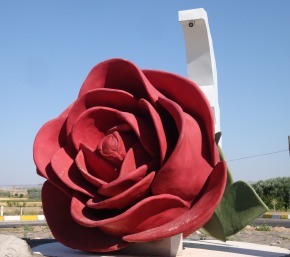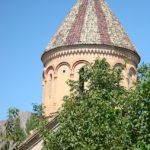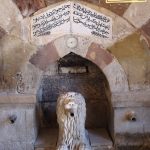Rose City Population: 9,500
Old name: Zoropassos, Aravissos, Arapsun/Arabsun
Favourite son: Seyyit Mehmed Paşa Silahtar (grand vizier)
Gülşehir. The Rose City. Sounds so pretty, doesn’t it? But for most people little Gülşehir, on the banks of the Kızılırmak river, is just somewhere to whip through on the way from Nevşehir airport in the village of Tuzköy to the better-known sights of central Cappadocia. Few people pause on the way through. So what would you find if you did decide to break your journey?
Around town
Gülşehir’s most striking monument is the Karavezir Cami, erected in 1778 in a style best described as Ottoman Baroque. A large domed building with eight mini-domes and a single soaring minaret, the Karavezir Cami is built from the striking sandy-coloured local stone. The grand entrance is surrounded by stone painted to look like marble although the smaller doors on either side of it look as if they could have been filched from one of the local houses.
The mosque was built for Seyyit Mehmed Paşa Silahtar (1735-81), also known as Karavezir (the Black Vizier). Mehmet was a local boy who had traveled to İstanbul in an attempt to get on in the world. His success is clear from the buildings he bestowed on his home town.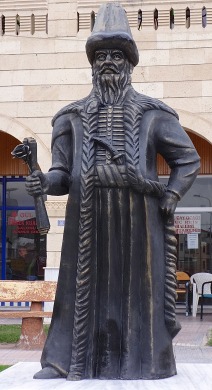
Across the road a low building with multiple domes was constructed in 1780 to serve as a medrese (school). Almost unbelievably it was used as a prison from 1933 to 1962 when good sense prevailed and it was converted into a library, long overdue for an injection of cash.
The third building that Mehmed Paşa gave to the town was a small hamam. Built in 1777, this still offers bathing services to men on a daily basis and to women on Saturdays from 10am to 2 pm.
There are just enough crumbling stone houses left in the Cumhuriyet Mahallesi to give you an idea how much prettier a place Gülsehir must have been in the years before the 1923 Graeco-Turkish population exchange. The same mahalle is dominated by a chalky-white ridge of rock completely riddled with caves. On top of it perches the only decent hotel this side of Nevşehir, the Bilasa Castle Country Hotel with its strangely toy-town crenellations.
You’re unlikely to want to linger in modern Gülşehir, although the Kızılırmak (Red River) skirts the town prettily on its way to the Cappadocian pottery town of Avanos.
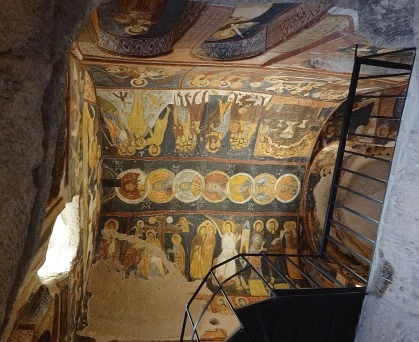
Road to Nevşehir
Gülşehir’s two finest monuments are not in the town centre at all but out on the road to Nevşehir. Of the two, the most impressive is the Church of St John (AKA Karşı Kilisesi) which is down a short track immediately on the right as you leave town.
This is a church which deserves to be as well-known as the Karanlık Kilisesi (Dark Church) and Tokalı Kilisesi (Buckle Church) inside the Göreme Open Air Museum. Presumably it owes its relative anonymity to the fact that, until 1995, its amazing frescoes were completely concealed by soot. In that year, however, Professor Rıdvan İşler started the painstaking task of cleaning and restoring them. Today their colours are quite astonishingly vivid.
The church lurks behind a relatively nondescript entrance but as soon as you cross the threshold you feel your jaw dropping because this is a church on two levels – and even from the ground floor you can see that the paintings on the second level are exceptional.
The ground floor itself makes do with simple red crosses and stylised plant designs. On one side a dark and narrow tunnel leads off to a dormitory, on the other there is a cave room with a wine-pressing niche. Against the west wall there are still signs of the original rock-cut staircase. Fortunately for visitors the restoration work included the installation of a spiral stairway to bring people safely up to the level of the paintings.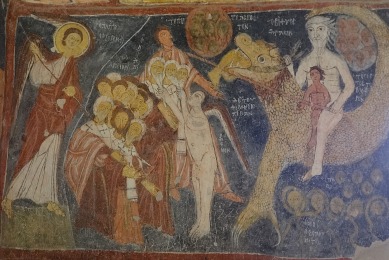
It would be hard to say which of the images on the walls is the most striking. The figure of a podgy Jesus being baptised by St John? The Dormition of the Virgin with the soul of the dead St Mary held up so that it looks like her reflection in a mirror? The two warrior saints on the west wall whose horses ride high above the coiled dragons snapping at their ankles? The white-haired, white-bearded figures of the patriarchs clasping souls to their bosoms?
Everyone will have their own personal favourite, although it’s worth noting that the image of the Last Judgement on the west wall, with the Angel Gabriel weighing human souls ready for consignment to heaven or hell, appears only rarely elsewhere in Cappadocia.
 Another couple of km along the road towards Nevşehir on the right-hand side of the road you will see the so-called Açık Saray, which is not actually an Open Palace at all but a group of rock-cut monasteries and churches dating back to the sixth or seventh century. Some commentators prefer to believe that the buildings served as accommodation on Cappadocia’s main north-south road.
Another couple of km along the road towards Nevşehir on the right-hand side of the road you will see the so-called Açık Saray, which is not actually an Open Palace at all but a group of rock-cut monasteries and churches dating back to the sixth or seventh century. Some commentators prefer to believe that the buildings served as accommodation on Cappadocia’s main north-south road.
Hunt about and you are likely to count at least three ‘monasteries’ whose facades are decorated with key-shaped arches and enlivened with splashes of red paint designed to look like flames, chequerboards and even the odd arrow pointing heavenwards.
This is a site which children should enjoy, with lots of hills and caves to scramble around.
Finally, look out for the Mantarkaya (Mushroom Rock), a giant chunk of rock eroded into the shape of a mushroom by centuries of wind and rain.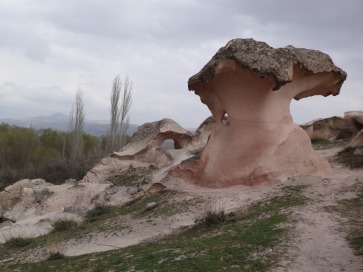
Sleeping
Most people will prefer to base themselves in the cave hotels of Göreme, Uçhisar, Ürgüp or Avanos.
Bilasa Castle Country Hotel. Tel: 0384-411 4202
Transport info
Turkish Airlines offers flights from İstanbul to Nevşehir/Tuzköy.
Regular buses link Gülşehir with Nevşehir (19km), passing the Açık Saray and the Church of St John.
Day trip destinations
Read more: http://188.95.146.218/news-139087-gulsehir-the-black-viziers-playground.html
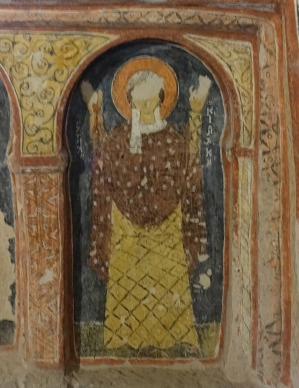 Image of the donor who paid for St John’s church in 1212 according to an inscription
Image of the donor who paid for St John’s church in 1212 according to an inscription
